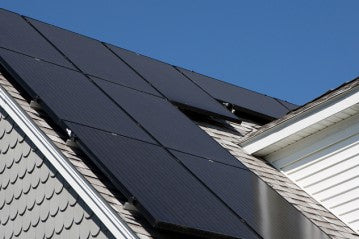
As solar energy continues to gain popularity among environmentally-conscious consumers, RV owners are increasingly turning to solar-powered solutions to meet their energy needs on the road. A crucial component of any solar-powered RV system is the house battery, which stores the energy generated by solar panels for use during periods of low sunlight or at night. In this blog post, we will explore the important aspects of RV house battery replacement, focusing on the integration of solar battery systems. Whether you're a seasoned RVer or a newbie looking to make the switch, read on to discover the key considerations for a successful RV house battery replacement.
1. Understanding the Role of a House Battery
Before delving into the specifics of RV house battery replacement, it's essential to grasp the role of a house battery within the overall solar-powered system. The house battery is responsible for storing and supplying electrical energy to power various appliances and devices in your RV. From lighting and refrigeration to entertainment systems and charging mobile devices, a reliable house battery is essential for a comfortable and convenient camping experience. When considering a replacement, it is important to choose a battery that aligns with your energy demands and usage patterns.
2. Evaluating Battery Types for RV Applications
When it comes to RV house battery replacement, it's crucial to consider the different battery types available on the market. While traditional lead-acid batteries have long been the go-to option, advancements in technology have introduced more efficient and reliable alternatives. Here are a few popular choices for RV house batteries:
a. Lithium-ion Batteries: Lithium-ion batteries have gained significant traction in recent years due to their superior performance and longer lifespan compared to lead-acid batteries. They offer a higher energy density, meaning they can store more energy in a smaller and lighter package. Lithium-ion batteries also have a longer cycle life, allowing for more charge and discharge cycles before performance starts to decline. Although they tend to have a higher upfront cost, the long-term benefits often outweigh the initial investment.
b. AGM Batteries: Absorbent Glass Mat (AGM) batteries are a type of lead-acid battery that uses fiberglass mat separators to absorb and hold the battery acid electrolyte. AGM batteries are maintenance-free, spill-proof, and can handle deep discharges without suffering from damage. They are a popular choice for RV owners due to their ability to provide consistent power output and withstand rugged travel conditions.
c. Gel Batteries: Gel batteries, another type of lead-acid battery, contain a gel-like electrolyte that eliminates the risk of acid spills. They are also maintenance-free and provide reliable power delivery. Gel batteries are known for their ability to withstand deep discharges without compromising performance. However, they typically have a shorter lifespan compared to lithium-ion or AGM batteries.
3. Integrating Solar Battery Systems
To truly maximize the potential of solar energy in your RV, integrating a solar battery system is highly recommended. A solar battery system allows you to store excess energy generated by your solar panels during the day, ensuring a continuous power supply even when sunlight is scarce. Here are a few key factors to consider when integrating a solar battery system into your RV:
a. Battery Capacity: The capacity of your solar battery system will determine how much energy it can store. Assess your energy needs and usage patterns to determine the appropriate battery capacity for your RV. A larger capacity will allow for longer periods of self-sufficiency, especially during cloudy days or nights.
b. Charging Efficiency: Consider the charging efficiency of the battery system you choose. High-quality solar batteries often have excellent charge retention and low self-discharge rates. This means they can efficiently convert and store solar energy, ensuring you get the most out of your solar panels.
c. Battery Management System (BMS): A BMS is a crucial component of a solar battery system. It helps regulate charging and discharging processes, ensuring the battery operates within safe parameters. Look for a solar battery system with an advanced BMS that offers features such as overcharge protection, temperature monitoring, and cell balancing.
Conclusion
RV house battery replacement is a significant decision that can greatly enhance your camping experience. By understanding the role of a house battery, evaluating different battery types, and integrating solar battery systems, you can ensure a reliable and sustainable power source for your RV. Whether you opt for lithium-ion batteries for their longevity and energy density, AGM batteries for their durability, or gel batteries for their resilience, make an informed choice based on your specific needs and budget. Embracing solar energy in your RV not only reduces your carbon footprint but also allows you to venture off the beaten path with confidence, knowing that power is at your fingertips. So, get ready to hit the road and embrace the freedom of solar-powered RV adventures!

0 comments